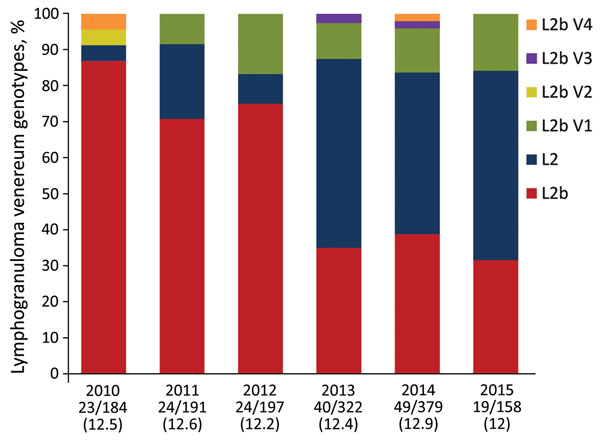Volume 22, Number 11—November 2016
Dispatch
Changing Pattern of Chlamydia trachomatis Strains in Lymphogranuloma Venereum Outbreak, France, 2010–2015
Figure

Figure. Distribution of lymphogranuloma venereum–associated Chlamydia trachomatis genotypes and variants, according to sequencing results of the ompA gene of representative patient samples, France, 2010–2015. Numbers below bars indicate no. samples analyzed/no. cases total (%).
Page created: October 19, 2016
Page updated: October 19, 2016
Page reviewed: October 19, 2016
The conclusions, findings, and opinions expressed by authors contributing to this journal do not necessarily reflect the official position of the U.S. Department of Health and Human Services, the Public Health Service, the Centers for Disease Control and Prevention, or the authors' affiliated institutions. Use of trade names is for identification only and does not imply endorsement by any of the groups named above.